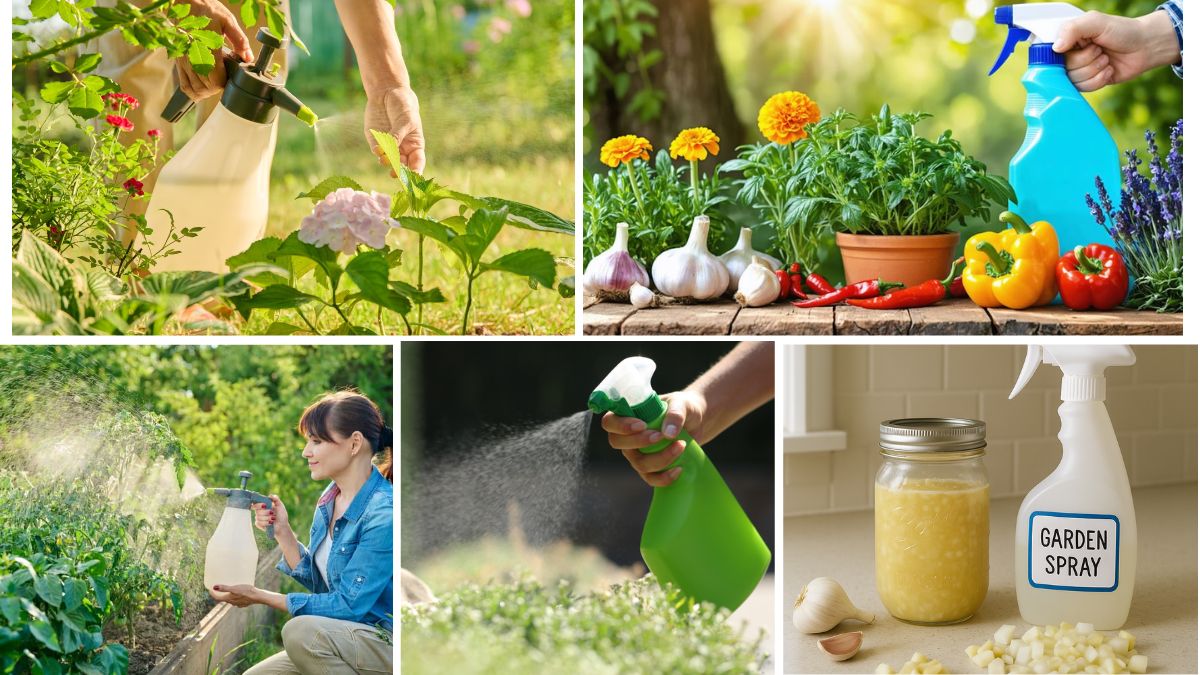Gardeners, whether seasoned or beginners, often face one persistent challenge — pests. These unwelcome guests can wreak havoc on fruits, vegetables, flowers, and even ornamental plants. While chemical pesticides offer quick solutions, they also pose threats to the environment, beneficial insects, pets, and even human health. Thankfully, nature offers a more sustainable option: pest control using common kitchen ingredients. This article dives deep into effective, easy-to-make, and budget-friendly pest control hacks straight from your kitchen.
Why Choose Natural Pest Control?
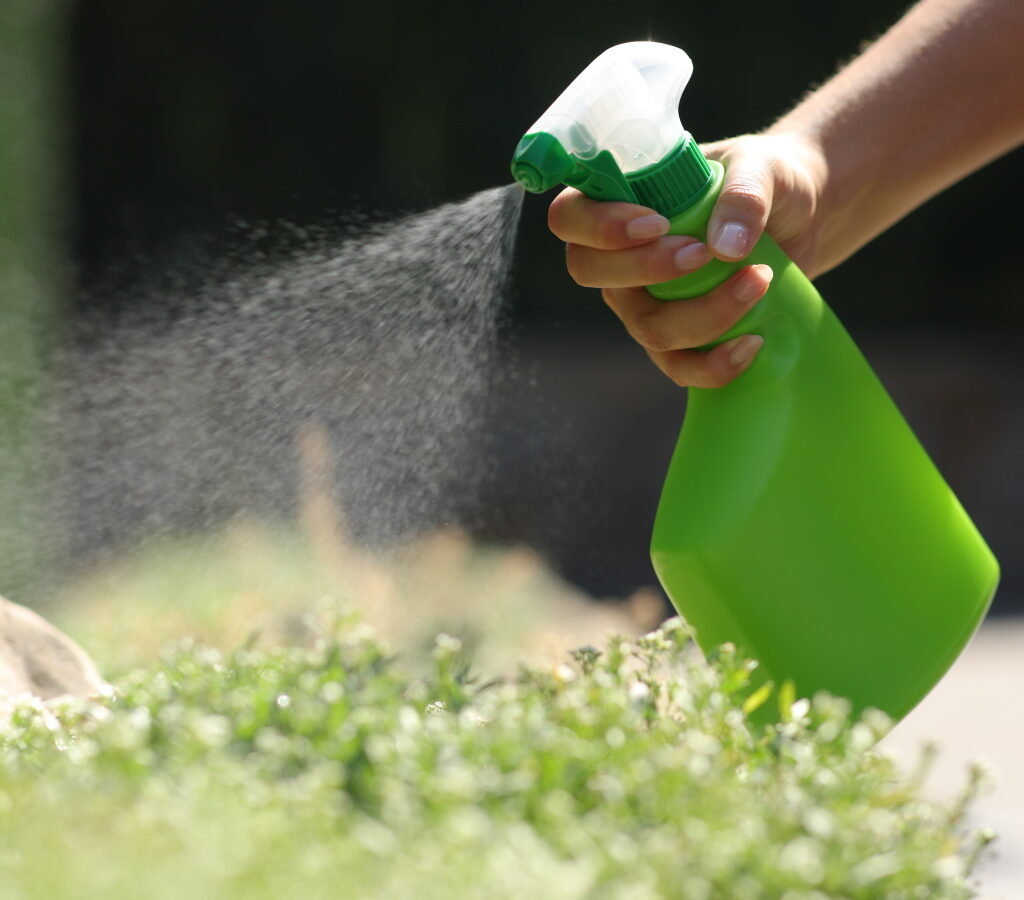
Before we explore the remedies, it’s essential to understand why using natural ingredients from the kitchen is a smarter approach:
1. Eco-Friendly
Unlike synthetic pesticides, natural alternatives don’t leave toxic residues. They decompose quickly and don’t pollute the soil or water systems.
2. Safe for Pets and Children
Many chemical products are harmful to pets and kids. Natural pest control ensures that your garden remains a safe space.
3. Readily Available
Most households already stock the ingredients needed — making it convenient and cost-effective.
4. Preserves Beneficial Insects
Chemical sprays often kill beneficial pollinators and predatory insects. Natural remedies are usually selective in targeting harmful pests.
Top Kitchen Ingredients for Garden Pest Control
1. Garlic Spray
Pests Controlled: Aphids, caterpillars, whiteflies, and beetles
How it Works: Garlic has sulfur compounds that act as a natural insect repellent.
Recipe:
- 2 whole bulbs of garlic
- 1 tablespoon of liquid dish soap
- 1 liter of water
Instructions:
- Crush the garlic and soak it in water overnight.
- Strain and add dish soap.
- Spray directly on the affected plants every few days.
2. Chili Pepper Spray
Pests Controlled: Mites, aphids, and slugs
How it Works: Capsaicin in chilies is a potent irritant to most garden pests.
Recipe:
- 2 tablespoons of chili powder or crushed red pepper
- 1 liter of water
- A few drops of liquid soap
Instructions:
- Mix ingredients well.
- Let it steep for 12 hours and strain.
- Spray on the undersides of leaves and affected areas.
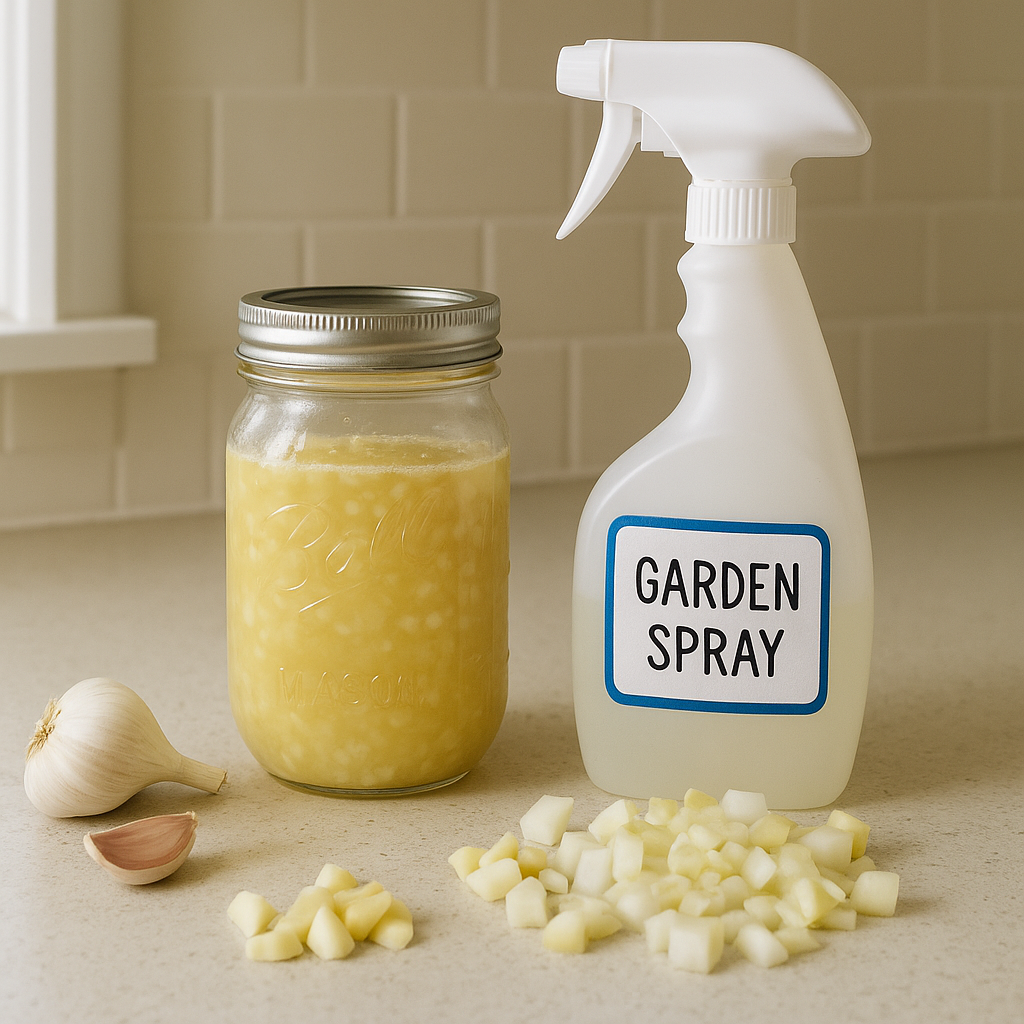
3. Onion and Garlic Pest Spray
Pests Controlled: Thrips, caterpillars, aphids
Recipe:
- 1 medium onion
- 1 garlic bulb
- 1 liter of water
- 1 teaspoon of dish soap
Instructions:
- Blend onion and garlic with water.
- Strain and add dish soap.
- Use once a week or after rains.
4. Neem Oil and Kitchen Soap
Pests Controlled: Mealybugs, aphids, spider mites
How it Works: Neem oil disrupts the life cycle of pests and acts as a systemic insecticide.
Recipe:
- 1 teaspoon of neem oil
- 1 liter of warm water
- 1/2 teaspoon of mild dish soap
Instructions:
- Mix and shake well.
- Spray in the early morning or evening.
5. Baking Soda Fungicide
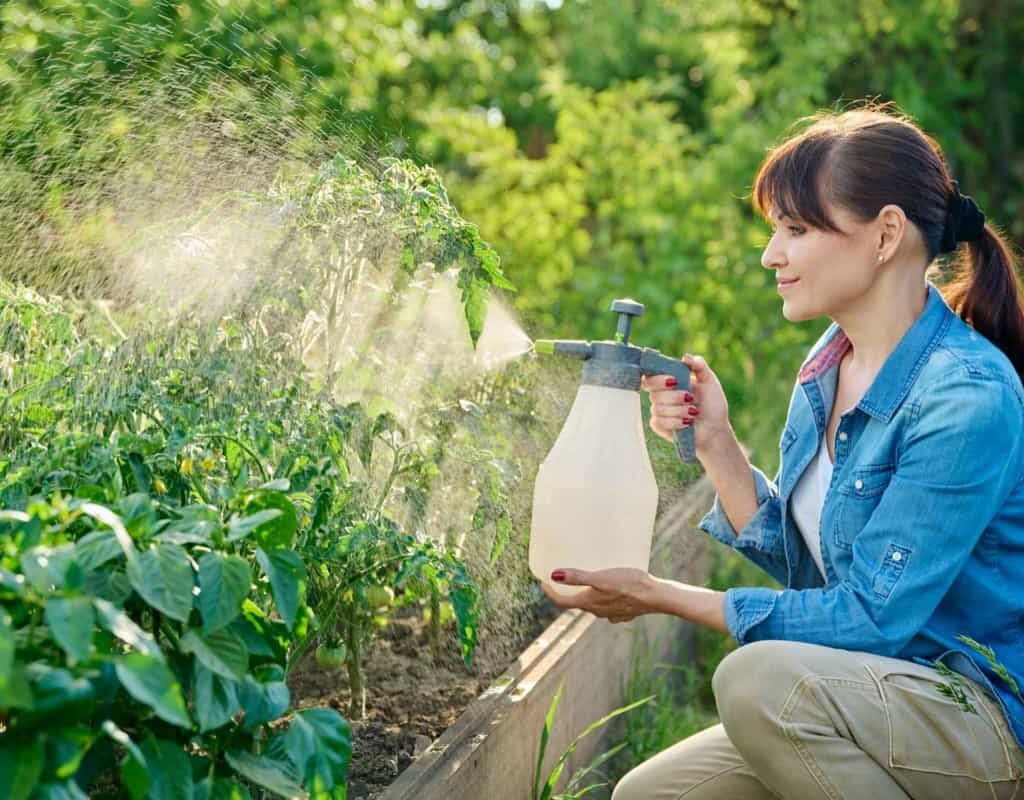
Pests Controlled: Fungal issues like powdery mildew and black spot
Recipe:
- 1 tablespoon of baking soda
- 1 liter of water
- 1/2 teaspoon of dish soap
Instructions:
- Mix thoroughly.
- Spray weekly to prevent and treat fungal infections.
6. Vinegar Spray
Pests Controlled: Slugs, ants, and fruit flies
How it Works: Its acidity disrupts the nervous system of many insects.
Recipe:
- 1 cup white vinegar
- 3 cups water
- A few drops of dish soap
Instructions:
- Combine all ingredients.
- Apply directly on pests or around plant bases.
Note: Avoid spraying vinegar directly on foliage, as it can damage leaves.
7. Citrus Peels
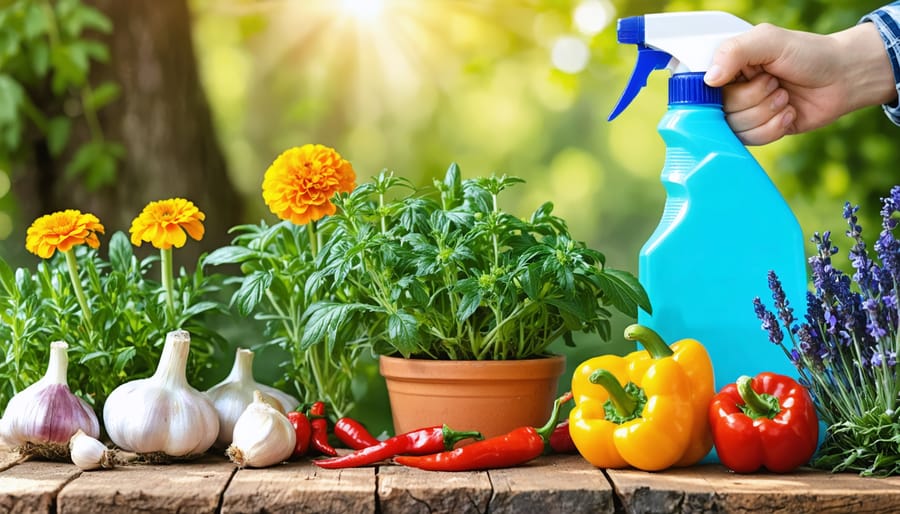
Pests Controlled: Ants, aphids, and cats
How it Works: The limonene in citrus peel is a natural deterrent.
Usage:
- Chop citrus peels and scatter them around the garden or plant base.
- Alternatively, blend peels with water and spray the mixture.
8. Coffee Grounds
Pests Controlled: Slugs, ants, and cats
How it Works: The texture and scent repel pests while enriching soil.
Usage:
- Sprinkle around plants as a barrier.
- Mix into compost for added benefits.
9. Cucumber Peels
Pests Controlled: Cockroaches and ants
Usage:
- Place fresh peels around plant bases or garden corners.
- Replace every few days for continued effectiveness.
10. Beer Trap for Slugs
How it Works: Slugs are attracted to the yeast in beer.
Instructions:
- Fill a shallow container with beer.
- Bury it so the rim is at soil level.
- Empty daily.
Tips for Effective Application
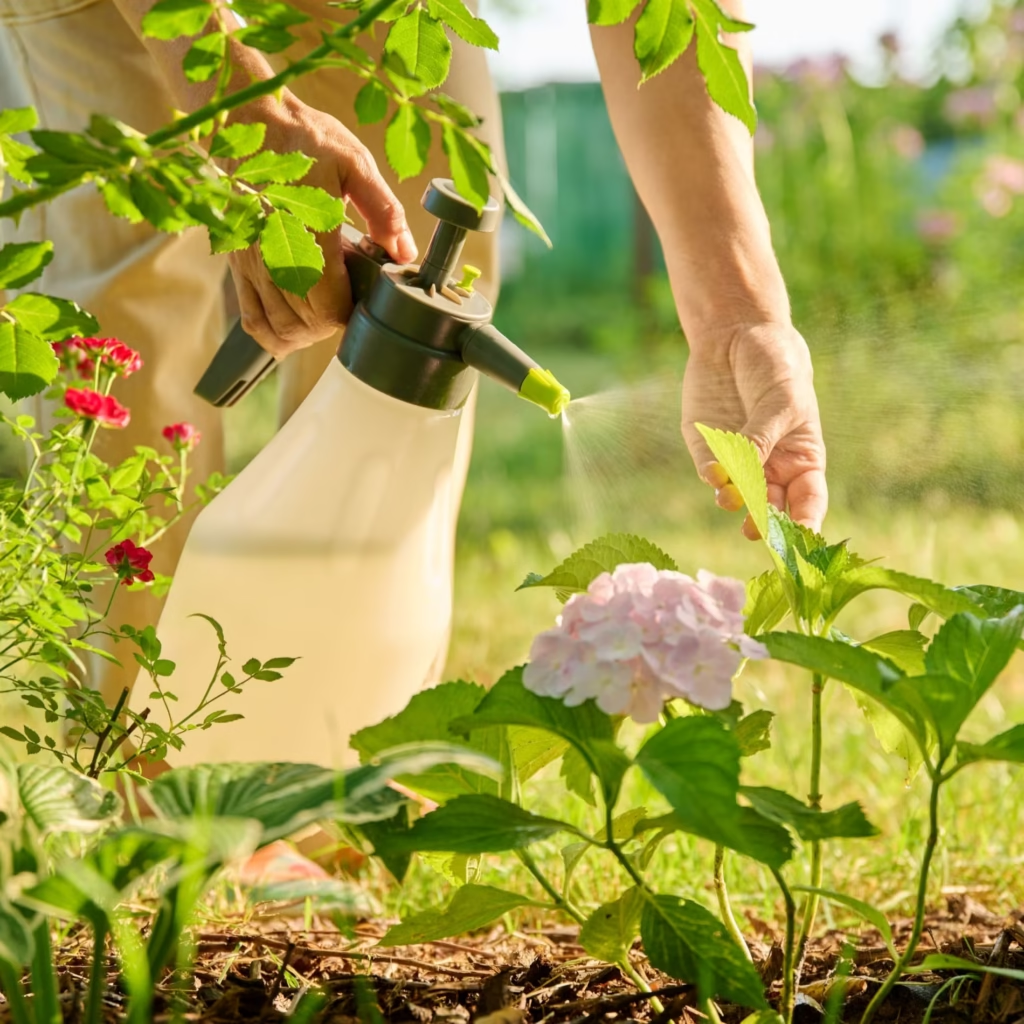
1. Test First
Always test any homemade spray on a small section of the plant. Wait 24 hours to check for damage.
2. Timing Matters
Apply early in the morning or after sunset to avoid leaf burn and protect pollinators.
3. Use Fresh Ingredients
Fresh garlic, onion, and citrus peels yield stronger, more effective sprays.
4. Reapply After Rain
Rain can wash away sprays, so repeat application is necessary after a downpour.
Integrated Pest Management (IPM)
While kitchen-based pest solutions are effective, they work best as part of a holistic strategy called Integrated Pest Management (IPM). IPM focuses on:
- Preventive measures: Crop rotation, companion planting
- Monitoring: Regularly inspect plants
- Natural control: Encouraging beneficial insects like ladybugs and lacewings
- Cultural practices: Proper watering and spacing to reduce pest habitat
Common Mistakes to Avoid
- Overusing soap: Can damage sensitive plant leaves.
- Storing mixtures for too long: Fresh sprays are always more potent.
- Applying during full sun: Leads to scorched leaves.
- Skipping the underside of leaves: Many pests hide here.
Conclusion
Controlling garden pests doesn’t require toxic chemicals or expensive solutions. In fact, your kitchen already holds everything you need to keep pests at bay. Garlic, onion, chili, vinegar, and baking soda offer powerful natural remedies that are safe for your plants, soil, and loved ones.
By integrating these home-based hacks into your gardening routine, you not only fight off harmful insects but also foster a more sustainable and environmentally-friendly green space. Next time you spot an infestation, skip the synthetic pesticide aisle and look no further than your pantry!
